Chain Line and Adjustment
The simplest way to connect the crank sprocket to the sprocket on the rear wheel is with a chain straight from one to the other. While this works on a bicycle because there is nothing between the two sprockets, as you can see below, a direct connection would pass through the rider in a velomobile.
To get around this, the chain line can be routed below the seat using intermediate idler sprockets — single sprockets mounted on a bearing that can spin freely. While the chain line is straight between each idler, these sprockets allow the chainline to bend round a corner.
Each idler is adds cost to the driveline though, and each change of direction will add some drag and will slightly reduce the power that gets to the rear wheels. Therefore a lower number of idlers is better. Here, because the base of the rider’s seat is close the the front set of idlers, the rear set can be removed if the chainline is allowed to pass through the rear bulkhead:
This is a very similar chainline to most rear-wheel-drive recumbent cycles.
Chainline Adjustment
The route between the input and output sprockets is only part of the problem, in the “Simplified Diverted Chain”, changing the position of the crank will change the length of the route that the chain takes, meaning that the chain will have to either have its length changed every time the rider changes, or a tensioner added to take up the slack.
Alternatively, an adjustment mechanism can be added to the chain line to maintain the same chain length even as the crank position is changed to accommodate different riders.
This requires three parallel lengths of chain, as shown above, where the dimension of one of the lengths is kept at a fixed value. The other two lengths then will have the same total length: as one reduces, the other increases by the same amount, keeping the total length constant.
In the diagram above, the length A is kept constant. The crank sprocket (largest) is connected rigidly to the leftmost idler sprocket, so as the crank position is adjusted left/right, the idler moves the same amount.
As the crank moves left, distance B reduces, but distance C increases by the same amount:
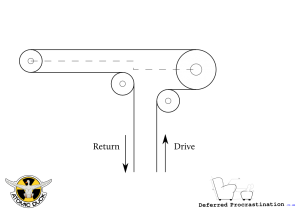 Chainline Adjustment — Forwards
Chainline Adjustment — Forwards
And as the crank moves right, distance B increases, but distance C reduces by the same amount:
Chainline Routing
To keep the chain and adjustment mechanism away from the rider as much as possible, the chainline could routed as shown below. This is the ideal for packaging the chain, the crank adjustment is horizontal and very little chain comes close to the rider. However, this is a very long chain route and has 7 idler sprockets, meaning that it is both expensive and heavy.
Using the “Simplified Diverted Chain” route with an chainline adjuster gives a much shorter route and uses only 4 idlers, though it means that the crank adjustment is now inclined, and is no longer horizontal. This presents a problem for pedal clearance (something that is quite limited with an enclosed shell).
This chainline layout is very similar using the additional *chain tensioner*[sic] that was available from Catrike (manufactured by Terracycle)
To keep the adjustment horizontal, an extra idler can be used. This allows the chainline adjuster to run horizontal and then be diverted downwards to clear the seat.
This third option is probably the best compromise for Atomic Duck. 5 idlers in the chainline (with an adjustment mechanism) is not too bad, and the chain line is not overly long, but having the chain run between the rider’s knees will mean it has to be covered with a cowling.
Have I missed something, is there a better solution?
Can the extra chain length of “Chainline Adjustment 1” be ignored?
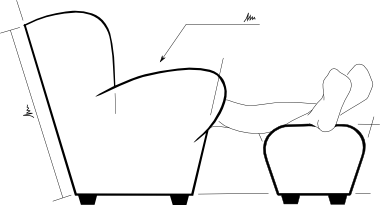
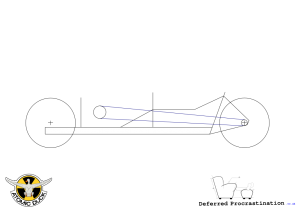
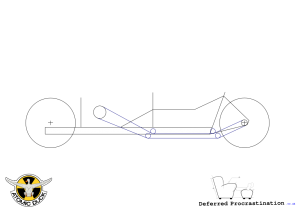
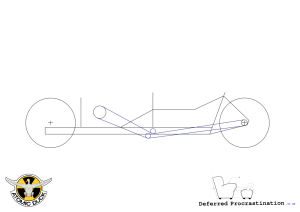
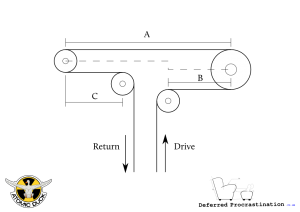
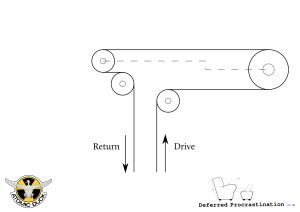
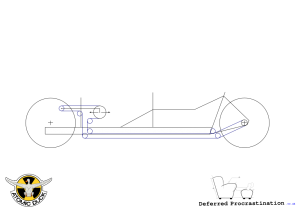
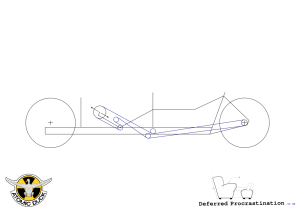
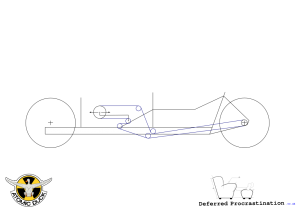
Opus the Poet wrote, “A simpler adjustment system that I use on my cargo trike is an arm that pivots on a jack shaft to adjust for leg length. I can get a swing of about +/- 45 degrees without grounding my heels on the floorboards. I use the jackshaft as my first stage in the number of gears on the trike, with a 5 speed cassette on the jackshaft.”